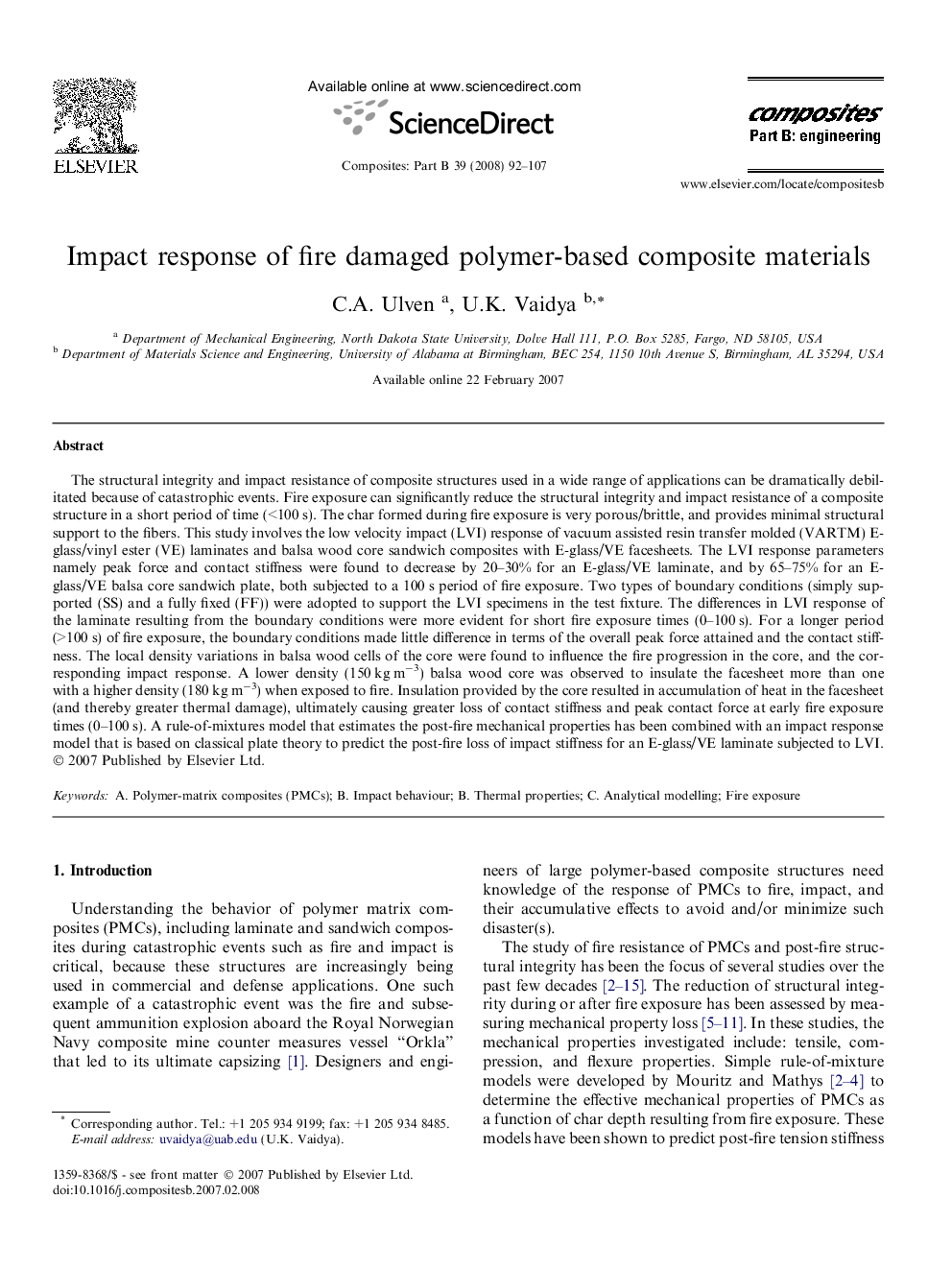| کد مقاله | کد نشریه | سال انتشار | مقاله انگلیسی | نسخه تمام متن |
|---|---|---|---|---|
| 819563 | 906569 | 2008 | 16 صفحه PDF | دانلود رایگان |

The structural integrity and impact resistance of composite structures used in a wide range of applications can be dramatically debilitated because of catastrophic events. Fire exposure can significantly reduce the structural integrity and impact resistance of a composite structure in a short period of time (<100 s). The char formed during fire exposure is very porous/brittle, and provides minimal structural support to the fibers. This study involves the low velocity impact (LVI) response of vacuum assisted resin transfer molded (VARTM) E-glass/vinyl ester (VE) laminates and balsa wood core sandwich composites with E-glass/VE facesheets. The LVI response parameters namely peak force and contact stiffness were found to decrease by 20–30% for an E-glass/VE laminate, and by 65–75% for an E-glass/VE balsa core sandwich plate, both subjected to a 100 s period of fire exposure. Two types of boundary conditions (simply supported (SS) and a fully fixed (FF)) were adopted to support the LVI specimens in the test fixture. The differences in LVI response of the laminate resulting from the boundary conditions were more evident for short fire exposure times (0–100 s). For a longer period (>100 s) of fire exposure, the boundary conditions made little difference in terms of the overall peak force attained and the contact stiffness. The local density variations in balsa wood cells of the core were found to influence the fire progression in the core, and the corresponding impact response. A lower density (150 kg m−3) balsa wood core was observed to insulate the facesheet more than one with a higher density (180 kg m−3) when exposed to fire. Insulation provided by the core resulted in accumulation of heat in the facesheet (and thereby greater thermal damage), ultimately causing greater loss of contact stiffness and peak contact force at early fire exposure times (0–100 s). A rule-of-mixtures model that estimates the post-fire mechanical properties has been combined with an impact response model that is based on classical plate theory to predict the post-fire loss of impact stiffness for an E-glass/VE laminate subjected to LVI.
Journal: Composites Part B: Engineering - Volume 39, Issue 1, January 2008, Pages 92–107